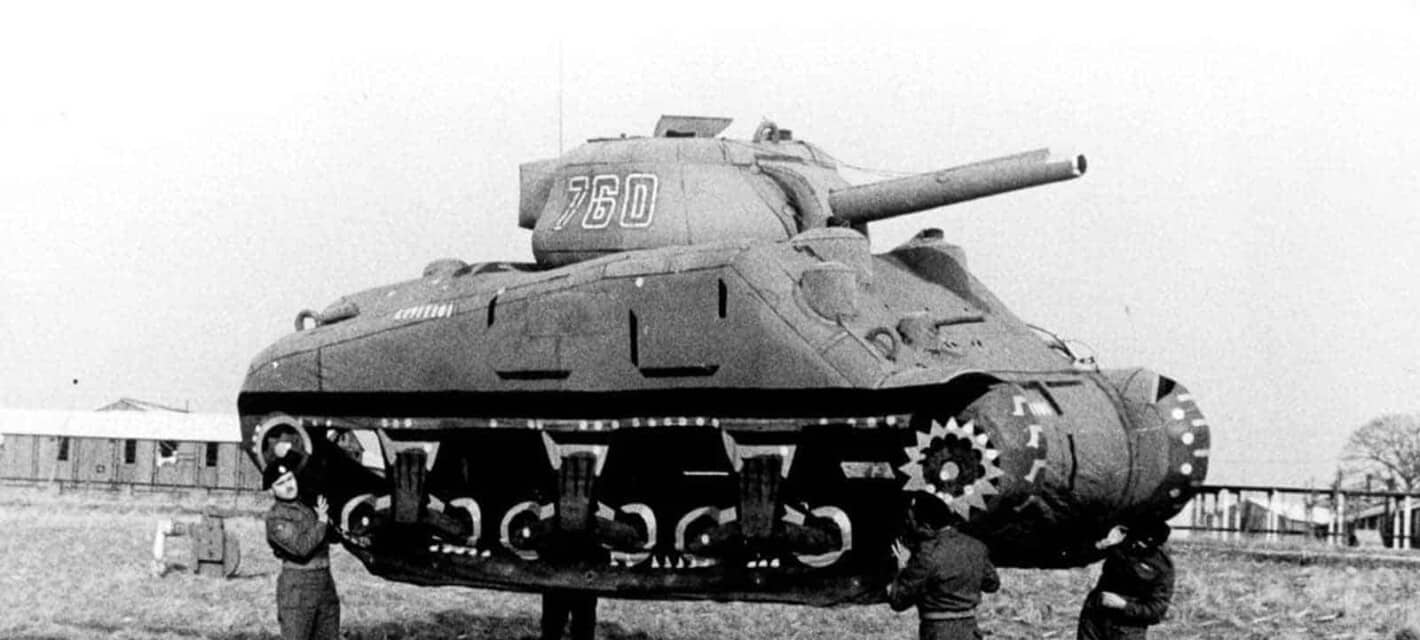Military deception is the art of misleading an enemy during wartime, via information warfare and disinformation, psychological operations, manipulating and amplifying the fog of war in which the opponent operates, visual deceptions, or similar methodologies intended to get the foe to act based on wrong intelligence. This causes the enemy to do what he should not, refrain from doing what he should, and otherwise operate at a disadvantage in a way that could be exploited by the side pulling off the deception.
War leaders from the dawn of recorded history, from Ancient Sumer in the third millennium BC and earlier, and up to our modern era, have benefited from such deceptions. Sun Tzu’s The Art of War prioritizes deception, placing it high on the list of arts a commander should master. Be it via unpredictable conduct, confusing maneuvers, denial of information, misinformation, disinformation, getting inside the opposing commander’s head and messing with his psyche, camouflage, concealment, or the use of dummies and decoys, the ability to deceive and bamboozle an enemy has often proven the difference between winning and losing, and the resultant binary of life or death.

Following are twelve of the most interesting military deceptions in history, where success or failure often depended upon the ability to mislead the enemy.

Lead-up to the 1973 Yom Kippur War
The first is the run-up to the surprise attack against Israeli positions in the Sinai Peninsula. This deception kicked off the 1973 Yom Kippur War between Israel and a coalition of Egypt and Syria, supported by expeditionary forces from other Arab states. The Egyptians resorted to deception measures which succeeded in fooling the Israelis about the timing of the attack, and caught them off guard when the blow fell in the Sinai.
Israel had seized Egypt’s Sinai Peninsula in the 1967 Six Day War, and over the subsequent years, a virtual standoff ensued. Egyptian and Israeli forces glared at each other across the narrow Suez Canal, which separated the rivals and across which low intensity warfare simmered for years- comprised in the main of artillery exchanges, commando raids, and aerial attacks. Meanwhile, Egypt – who was seeking to regain its lost territory and to wipe out the humiliation of the 1967 defeat – rebuilt, reorganized, and retrained its military for a rematch that all involved expected was coming.
Far in advance of the attack, Egyptian president Anwar Sadat began running massive military maneuvers in the vicinity of the Suez Canal, with the aim of accustoming the Israelis to large scale Egyptian troop movements near the Sinai, so when the time came for the actual attack, they would be lulled into dismissing its preparations as just another drill.
Unbeknownst to the Egyptians, the Israelis – through a highly placed Mossad agent – were aware by mid-1973 of the general Egyptian plan of attack. What the Israelis did not know, however, was when the attack would occur. Knowing the when was vital for Israel, whose small population precluded a large permanent military establishment – they could not afford to park hundreds of thousands of soldiers indefinitely in fortifications opposite the Egyptian positions. Instead, the Israeli system was predicated upon fleshing out a small standing military with a rapid and massive mobilization of civilian reservists. However, such mobilizations were highly disruptive, as well as quite expensive, and the mass of civilians taken from their daily occupations and put into the military could not be kept in uniform for long.
Playing upon that vulnerability, months before the planned attack, the Egyptians tricked the Israelis into believing that an attack was imminent, causing them to declare a disruptive and expensive emergency mobilization. Burned once by that false alarm, the Israelis were reluctant to call another mobilization a few months later, when the Egyptians began preparations for the real attack.
A week before the attack, the Egyptians conducted massive military maneuvers near the Suez Canal, during which they called up reservists, but Israeli intelligence dismissed it as just another drill. To further lull their enemy, two days before the actual attack, the Egyptians announced the demobilization of the reservists called up for the “military exercise”.
Some dissenting voices within Israeli intelligence sounded the alarm that these were preparations for actual war, but they were ignored. Thus, when the Egyptians launched their attack across the Suez Canal on October 6th, 1973, Israel was caught completely off guard and wrong footed, and suffered high casualties as its forward fortifications were swiftly overrun, and the Egyptians secured a beachhead on the eastern side of the canal. Although the Israelis eventually prevailed in the war, clawing their way back up and encircling an Egyptian army weeks later, their early setbacks and high casualties early in the war were a direct result of the successful Egyptian deception operation.

